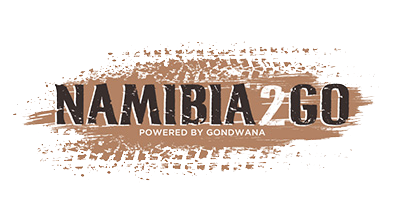Their origins steeped in mystery, the wild horses in the Namib Desert have captured imaginations and touched hearts. These resilient animals have survived in the desert for more than a century and over the years have become a major tourist attraction in southern Namibia.
The book ‘𝑾𝒊𝒍𝒅 𝑯𝒐𝒓𝒔𝒆𝒔 𝒊𝒏 𝒕𝒉𝒆 𝑵𝒂𝒎𝒊𝒃 𝑫𝒆𝒔𝒆𝒓𝒕’ (now out-of-print) is the outcome of a collaboration, revealing the little-known history and behaviour of the wild horse population. Manni Goldbeck sheds light on the horses’ origins, taking the reader back to the tumultuous time of World War l and exploring the more plausible theories, while Telané Greyling (PhD Zoology) shares her knowledge of the intriguing behaviour of the Namib horses gleaned from her many years of research and life amongst the horses. Freelance writer, Ron Swilling, created a text from the material giving it a breath of life. Finally, from the love for the horse and all things wild, the book was born.
An equine biography of the Namib wild horses, the book traces the beginnings of Equus groups on the sub-continent, following their journey over time to Namibia and the present day.
Join us every Sunday as we share the wild horses’ journey with you.
𝐂𝐇𝐀𝐏𝐓𝐄𝐑 𝟏
𝐑𝐞𝐭𝐮𝐫𝐧 𝐭𝐨 𝐟𝐫𝐞𝐞𝐝𝐨𝐦
‘As long as we do not ask the horse to forget who he is, he will remind us of who we want to be.’
Melissa Sovey-Nelson - ‘If I Had a Horse’
Wild Horses. The words conjure up a host of strong images and bear a vast array of romantic notions: horses running free in an expansive landscape whipping up dust, manes flying in the wind; muscular stallions rearing proudly; and the pounding of hooves as a group of wild horses thunders past with breathtaking energy and power. The wild horse populations around the world evoke feelings of freedom that touch us in the unfathomable depths of our being. They inspire our imagination and feed our spirit. The advertising and film industries use this powerful imagery, often depicting horses in vast landscapes, adding to the images which we already harbour.
Horses have been domesticated since ancient times. They have been reined and harnessed, and have served us loyally at the cost of their natural lives, changing the face of history and opening the world up to transport, travel and speed. Yet, their wild beauty still stirs us deeply whenever we have the chance to glimpse one of these rare wild populations. We empathise with domesticated horses’ vanished freedom as we see their destiny mirrored in our structured lives in the confines of modern society. The existence of wild horses symbolises everything we have lost and which we long for in our personal lives. Whether we are horse lovers or not, they represent for us a deep longing to abandon our expected social norms and responsibilities, embrace free will and freedom, and to live untamed, unfettered lives.
Domesticated horses have not only lost their freedom and been exploited for millennia but they have lost their chance to form natural family units and bonds, and as such remain beautiful but dislocated beasts. In contrast, wild horses have reverted back to their wildness and natural ways with mares and stallions uniting and rearing foals in family groups with all the dynamics of wild Equidae. The paradox of human history is that humankind has been on a quest to tame, domesticate, exploit and control the world, yet when animals are encountered that have reclaimed their untamed nature, they settle in the human heart and stir the soul.
The wild horses in the Namib Desert have an added appeal, the allure of myth and mystery, and the embodiment of survival in an unforgiving landscape. At the turbulent time of World War I, a number of domesticated horses were abandoned in the arid regions of the Namib Desert due to absolute chance and the machinations of men.
Using their innate natural ability to survive, the horses adapted over approximately a century to the harsh environment that over the years became home. A unique, desert-adapted population emerged. Like the majority of the Namibian population whose ancestors travelled from East and Central Africa and settled in the desert land, or arrived on ships from other continents and made the south-west African soil their home, the horses found themselves in a new land and over a period of ten generations adapted to the conditions of this corner of Africa. Their history is inextricably woven into the history and development of the country, the emergence of new settlements, transport, the construction of railway lines, the chaos of local and foreign wars, the diamond rush, drought, growth and peace.


.png)
.jpg)
.jpg)




.png)

SUBMIT YOUR COMMENT